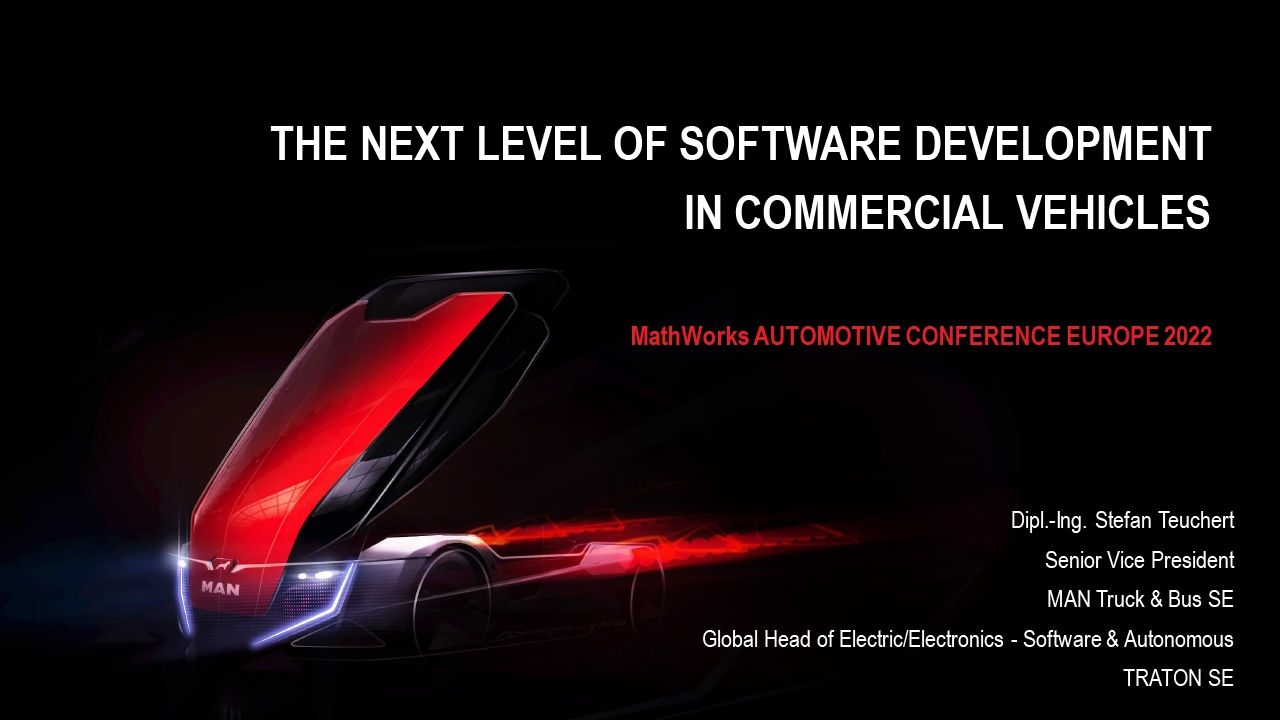Proceedings
Featured Presentations

Keynote: The Next Level of Software Development in Commercial Vehicles
Stefan Teuchert, MAN Truck & Bus
Plenary Session: Software Transformation
Keynote: The Next Level of Software Development in Commercial Vehicles
Stefan Teuchert, MAN Truck & Bus
Function Modeling and Validation at Mercedes-Benz: Success Factors, Roadmap, and Future Challenges
Dr. Thomas Ringler, Mercedes-Benz
Dr. Florian Wohlgemuth, Mercedes-Benz
Implementing Best Practices in Your Software Factory to Improve DevOps Metrics
Skanda Naglapur Ramamurthy, MathWorks
Electrification and Virtual Engineering
Development of a Fuel Cell System Simulator
Building an Electric Virtual Vehicle for Deployment to the Cloud
Dr. Jan Janse van Rensburg, MathWorks
Virtual Hardware-in-the-Loop (vHIL) for Accelerating xEV Application Software Development
Dineshkumar Selvaraj, Infineon Technologies
Master Class: Fulfill Range, Acceleration, and Cost Targets Using Battery Sizing
Lorenzo Nicoletti, MathWorks
Automated Driving and ADAS
A Cross-Domain Simulation Platform for ADAS and AD
What's New in MATLAB, Simulink, and RoadRunner for Automated Driving Development
Dimitri Hamidi, MathWorks
Rapid Prototyping of a Computer Vision Stack for AD Using MATLAB and Simulink
Dr. Roxana Daniela Florescu, Continental
A Conceptual Framework for ADAS/AD Safety
Dr. Mohammad Abu-Alqumsan, MathWorks
Master Class: Scene and Scenario Design for ADAS Simulation
Simone Hämmerle, MathWorks




















